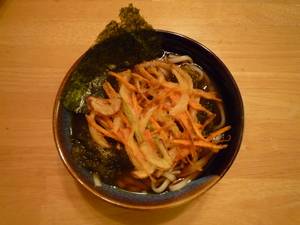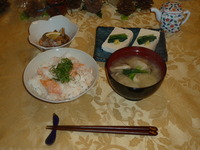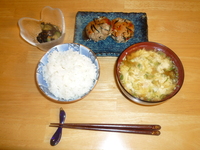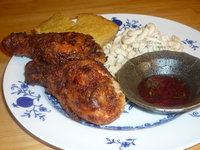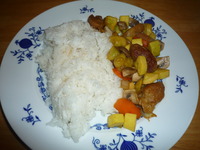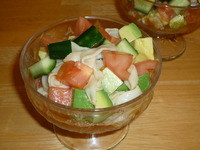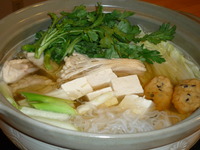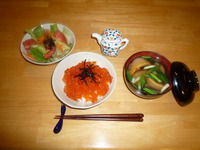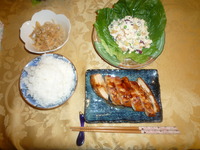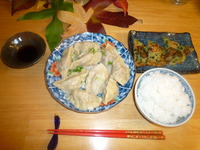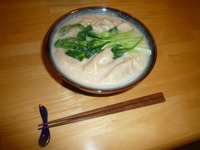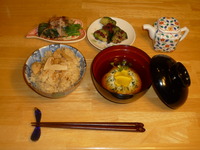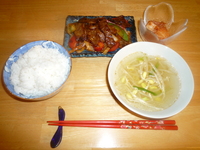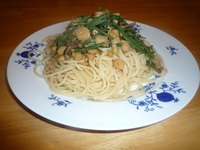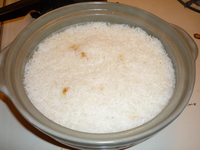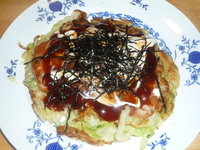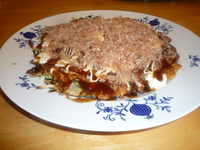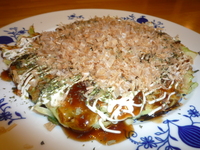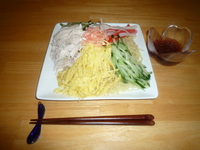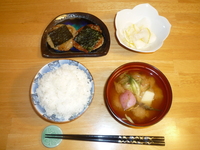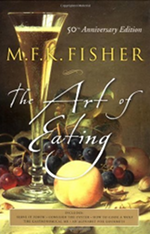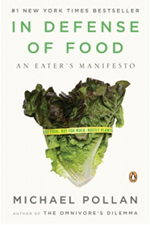Saturday, May 8th, 2010
Udon is a noodle soup popular in Japan. It’s not a gourmet dish but you’ll find some version of udon almost anywhere in Japan. It’s great during cold winter nights or even on hot humid days. Don’t ask me why but hot noodle dishes like ramen are very popular in the summer. I guess there’s something about eating a hot and steamy bowl of soup on a hot humid day that makes you feel a little cooler? I have no idea but according to my Japanese friend, it’s because you sweat. Even stranger...
Anyway, there are many variations of udon. It’s similar to domburi (rice bowl) in that you can choose almost any kind of topping. Today, I’m going to just talk about preparing the udon soup and noodles and I’ll slowly start to add different types of toppings. I usually like to eat it with kakiage, which is a combination of vegetables cut julienne and mixed in a tempura batter to keep it all together. Of course you can put any kind of tempura you’d like. Most restaurants will serve it with shrimp tempura and maybe one or two other types of vegetable tempura, green onions and shitake mushrooms.
Let’s start with the soup.
Basic Hot Udon (serves 1)
2 cups of
dashijiru (ichbandashi or nibandashi will do)
2 Tablespoons of Soy sauce
0.5 Tablespoons of Mirin
1 Tablespoon of Sake (Japanese cooking sake will do)
Udon noodles (125 grams approx.)*
1) After you’ve prepared the dashijiru, add the soy sauce and mirin and give it a quick stir. If you use nibandashi for this, than you can add a little hondashi (1/4 teaspoon) to add some more fish flavor.
2) Boil water and add noodles. The noodles should take about 8-12 minutes depending on the thickness of the noodles. (Follow the instructions on the package) If you get the frozen noodles then it should only take a few minutes.
3) Drain the noodles and rinse with cold water to get the starch in the noodles to firm up a bit. I like my noodles a little al dente and this helps them get a little chewier. Make sure you drain the noodles well so that the water doesn’t dilute the soup. Serve the noodles into a nice big soup bowl.
4) Bring the soup back up to a boil and add the soup to the noodles. You want to make sure the soup is hot because the cold noodles will bring the temperature down.
5) Add whatever topping you like. Examples include but are by no means limited to, tempura, half boiled egg, chopped green onion, nori (seaweed), piece of fried tofu for kitsune udon, tororo kombu (shredded kelp), tororo (grated yam) ANYTHING!
Cold udon dishes. There is also zaru udon or cold udon. I will talk more about that when it gets warmer.
In the future, I will post popular udon dishes.
*Udon usually come packaged in plastic bags and are bundled up into servings. One bundle is about 100 grams. 100 grams is usually not enough for me so I add a little more.
In the mean time I give you udon with vegetable kakiage.
